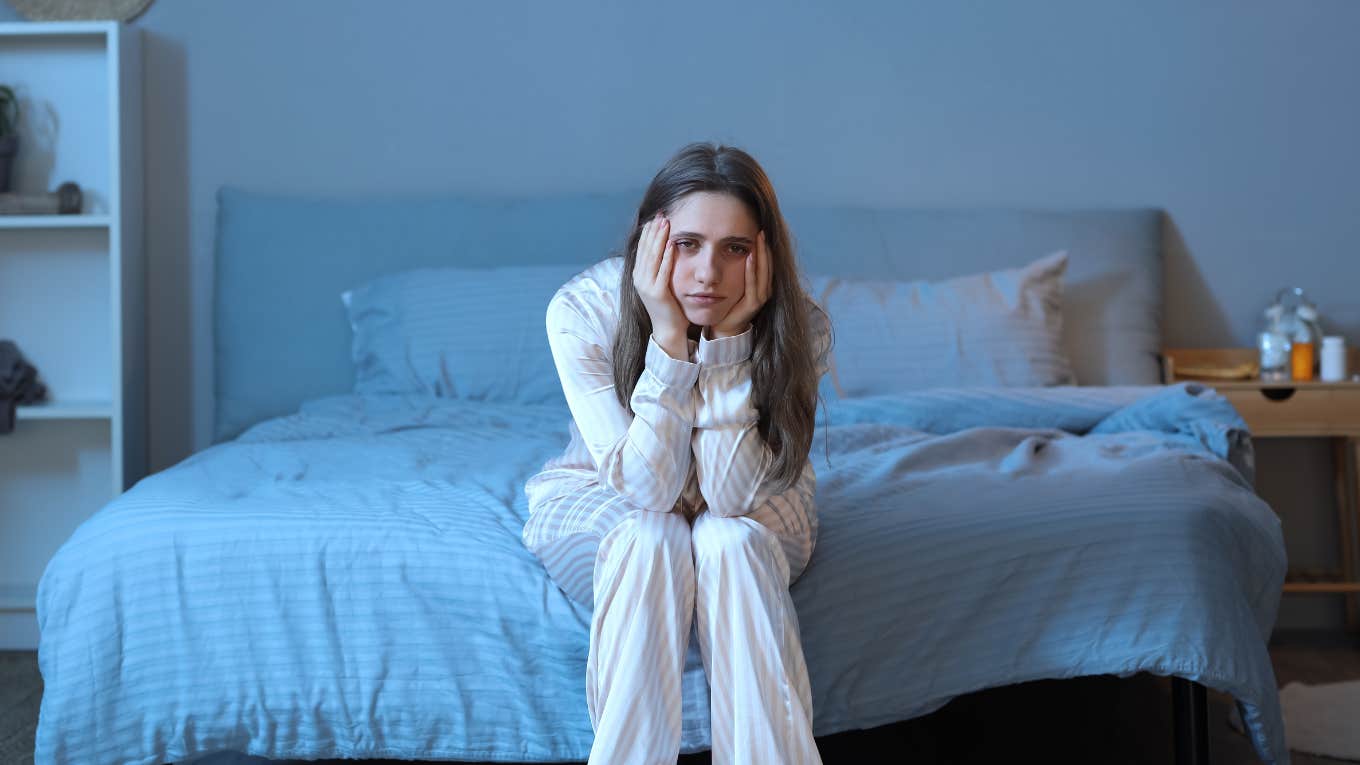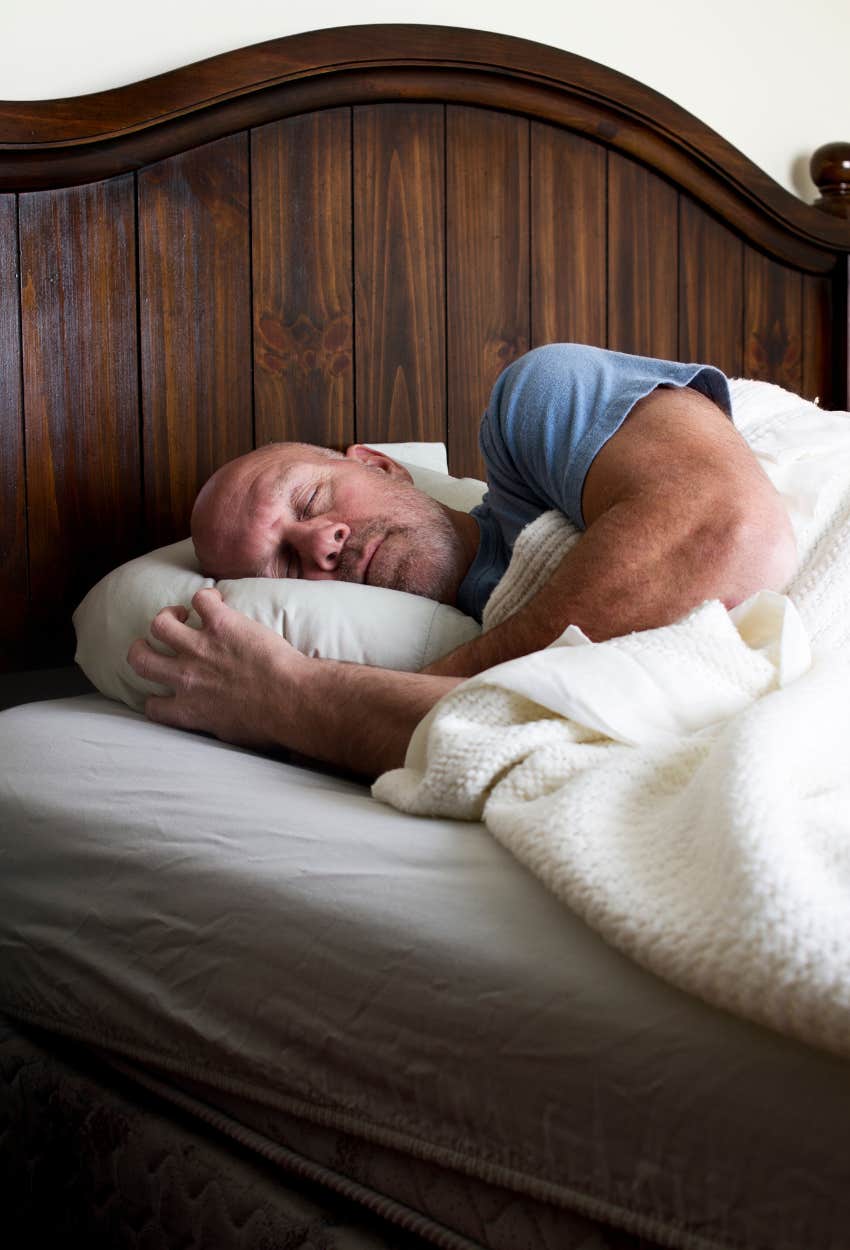Wellness Guru Shares Simple Eye Movement Technique To Use When You Wake Up In The Middle Of The Night & Can’t Fall Back Asleep
Remember these eye movements the next time you can't sleep.
 Pixel-Shot | Shutterstock
Pixel-Shot | Shutterstock Sleep is such an important part of leading a healthy life. Unfortunately, not many people get the quality sleep they need to support healthy brain and body functions. In fact, a study from 2015 found that 10% to 30% of the population worldwide have some form of insomnia.
Of course, there are remedies for sleep disorders like insomnia, including treating hormonal imbalances and underlying medical conditions that increase the risks, but for most people, it's just a part of getting older that they deal with.
If you suffer from chronic sleepless nights and would prefer a more natural remedy, wellness guru Heather Gordon might have the perfect solution.
The wellness guru shared a simple eye movement technique that could be the key to falling back asleep after a middle-of-the-night wake-up call.
Gordon took to TikTok to share the sleep hack she and her family use when they walk up in the middle of the night and need to go back to sleep. In the video, Gordon said that all you have to do is close your eyes and go through a series of motions.
Going through the technique, Gordon said, "With your eyes closed ... you're going to do this as soon as you find yourself awake in the night. And you're going to repeat it until you fall back asleep." Before demonstrating the technique, she stressed that she'd never made it through two whole cycles without falling back to sleep, which is why she swore by its effectiveness.
"So, you're gonna look all the way up with your eyes closed," demonstrating with her eyes open so it was easy to see.
"Then, you're gonna look all the way down like this," she demonstrated. "And then, I usually stop my eyes in the center before looking all the way to the left. Bring your eyes back to the center. And then look all the way to the right. Bring your eyes back to the center. Then, you're gonna take 'em up again, and you're gonna go all the way around."
She demonstrated a circular pattern with her eyes, not stopping at designated spots, starting with a circle to the right and then a circle to the left. After that, she said, "you're gonna pull them together like cross-eyed."
You simply keep repeating that pattern with your eyes closed until you fall asleep. Sounds pretty simple, right? Don't worry it's real, and there's science to back it up.
The science behind Gordon's eye movement technique is called cognitive shuffling.
Cognitive shuffling was coined by Dr. Luc P. Beaudoin, a professor at Simon Fraser University in Canada, during his research with fellow colleagues on the study Towards a Design-Based Analysis of Emotional Episodes.
The technique was designed for the purpose of helping you fall asleep by making you randomly think of nonsensical things that will tire your brain out and stop it from filling your head with anxiety-inducing scenarios. It's sort of like a grown-up version of counting sheep. Beaudoin utilized three techniques that would be easy for participants to use:
1. Random Word Generations: Think of a word like "cat," then think of other words with similar letters like "car’’ and so on. This will tire your brain out.
2. Mental Imagery: Now that you have the word "cat" in your brain, think of what the animal looks like. Once you visualize it in your head, visualize the next word, "car," and keep it going.
3. Avoiding Coherence: Your brain will want to shut itself off because your mind is wandering and thinking of things that do not correlate to each other, similarly to when you fall asleep.
Gordon's eye-movement technique is similar in that the constant changes are incoherent to the brain, especially when the eyes are closed. The brain can't find a correlation or reason for the behavior, so it tires itself out.
There are other methods you can use to help you fall asleep.
There are other methods you could try to help you relax if the eye movement or cognitive shuffling doesn't help. Deep breathing techniques, muscle relaxation, and meditation before going to bed can actually help your mind and body prepare for a restful night.
 Nicolesy | Canva Pro
Nicolesy | Canva Pro
There are also natural insomnia cures, such as drinking tea before bedtime, which can help you fall asleep. Herbs like valerian, chamomile, lavender, passion flowers, and even hops can act as natural sedatives to calm the body down. For others, white noise from a sound machine or even a fan can make falling asleep faster and easier.
It's always a good idea to talk to your doctor about your sleep struggles, as well. Chances are, these natural methods will help, but it's best to make sure you don't have any underlying conditions that should be addressed.
Sylvia Ojeda is an author with a decade of experience writing novels and screenplays. She covers self-help, relationships, culture, and human interest topics.

